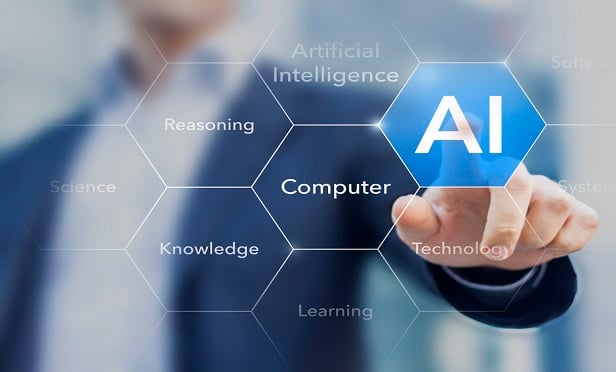 Man and AI.
Man and AI.
Offering a comprehensive benefits package can set an employer apart. However, the value of workplace benefits diminishes when they don’t match the needs of eligible employees.
People may spend more time on social media than reviewing coverage options during the open enrollment period, which usually results in regret. Fortunately, benefits brokers and managers — such as HR professionals and employers — are stepping up to help employees make informed decisions with artificial intelligence (AI). Discover how to leverage this emerging technology to help workers choose their benefits in 2025.
Recommended For You
Creating digestible content
Generative AI uses deep-learning models to rapidly produce text, images, videos and other content based on prompts — think of ChatGPT. Developers train these models with existing data to grow their knowledge of subject matters and craft relevant, digestible, new content.
You can use a specialized generative AI model to help employees wrap their heads around complicated insurance plans more easily. It can spell out overwhelming coverage details, simplify various plans' cost implications and visualize cost-saving scenarios.
Prompting generative AI to summarize technical information with plain language should increase comprehension and empower employees to explore possibilities confidently. The less time workers spend comparing premiums, coverage limits and network providers, the more energy they have to focus on other matters.
Neutralizing language barriers
Language barriers become a significant concern as North America embraces diversity to bridge the labor shortage and promote inclusivity.
Poor English competency hinders some workers from selecting the best benefit coverage. Although most non-native English speakers get by, many don’t speak it fluently enough to grasp complex concepts. Understanding text written in English without mastering the language increases the risk of miscomprehension.
For example, foreign-born workers accounted for 18.6% of the civilian workforce in the United States in 2023 — up by half a percentage point from the previous year. Latino workers made up 47.6% of them.
Generative AI makes creating simplified versions of your benefits resources in multiple languages painless. Spanish is a safe bet, but the United States also has a sizable population of workers of Asian descent.
Asia has dozens of languages, so find out what Asian employees natively speak. It’s the key to generating content they can understand to successfully convey your message. For instance, only some Indian workers have Hindi as their mother tongue, while others may use Bengali, Tamil or Telugu at home.
Promoting accessibility
Deciding on coverage options is challenging as it is. This task is even more difficult for visually impaired individuals. Even worse, employees with vision problems must get their benefits right to receive adequate care for their pressing medical needs.
With AI, you can create voice-generated guides. AI-powered text-to-speech tools can incorporate an audio component into your resources. Computer-generated voices sound realistic and have neutral accents. Some programs also produce non-English output for non-native speakers.
Personalizing the experience
Machine learning algorithms can help you better understand the unique requirements and preferences of employees based on their past behaviors. Casting your net wide may alienate some workers if you fail to consider their interests and motivations. Focusing on the individual rather than the group can yield better outcomes for everyone.
Data analysis can also identify trends causing people to spend more than necessary or postpone preventive care. For example, 24% of adults neglect their medical needs due to an inability to pay. Those covered by employer-sponsored high-deductible health plans are prone to skipping much-needed care due to unaffordability.
AI-driven personalization enables you to match coverage options to employees' unique health needs and financial capacities. However, beware of algorithmic bias. This caveat stems from the tendency of AI systems to make discriminatory conclusions about subjects because of the underlying biases in training data.
While it may be impossible to eliminate algorithmic bias, diversifying your data sources reduces its risk. While considering national trends has merit, using representative data based on actual users can produce more accurate personalized benefits recommendations.
Resolving queries quickly
AI-powered conversational chatbots can simultaneously help employees with routine queries, bridging the knowledge gap more quickly. These bots comb the knowledge base and recommend relevant self-help resources to workers. When these questions are out of the way, customer service representatives and HR department staff members have more time and energy to handle complex questions.
Conversational chatbots work well as mediums by curating relevant information and pointing employees in the right direction. Ultimately, you need a vast library of digestible articles to answer basic questions.
Generative AI can produce these resources rapidly or answer with new content as the output. However, you should predict people's general questions about workplace benefits. Use crowdsourcing and imagination to anticipate queries ahead of time to prepare AI accordingly.
Use AI to help employees elect appropriate benefits
AI is the disruptor you may be waiting for to help workers avoid benefit miscomprehension and analysis paralysis. When implemented correctly, this technology can meaningfully assist employers in offering employee benefits and beneficiaries in making better health decisions.
© 2025 ALM Global, LLC, All Rights Reserved. Request academic re-use from www.copyright.com. All other uses, submit a request to [email protected]. For more information visit Asset & Logo Licensing.







